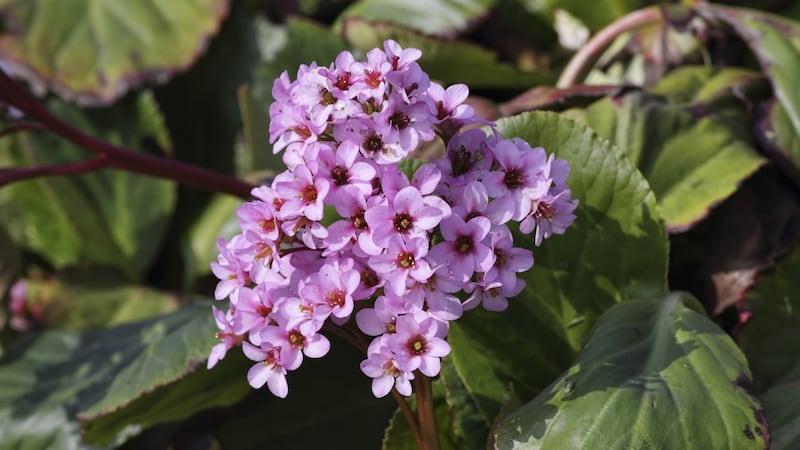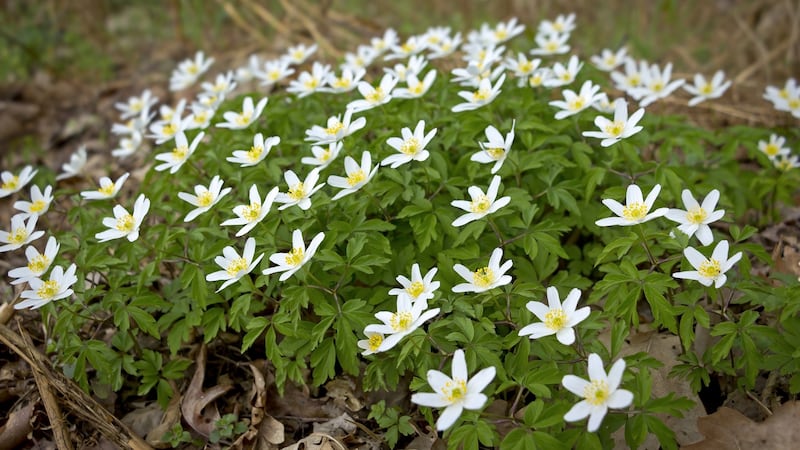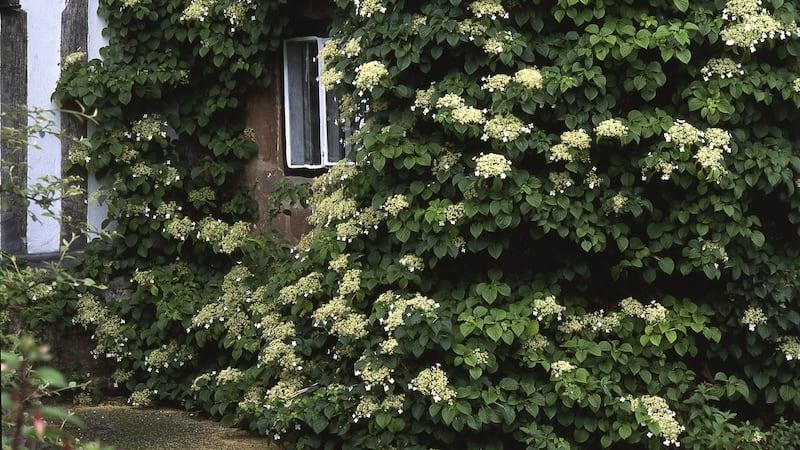Tell people that you have a shady garden and they’re likely to offer their commiserations, as if you’d confessed to having some unfortunate food allergy or inconvenient medical ailment such as bunions or fallen arches. This is because, in the eyes of many, a shady garden equals a gloomy garden, a place where plants will always struggle to grow well if they grow at all. Which I’m very happy to say is bunkum.
Yes, yes, it’s true that shady gardens can be challenging and that, when done badly, they are uninviting, melancholic places where too many good plants go to die slowly and sadly. But done well, the best are sophisticated, elegant, atmospheric spaces that completely “own” their shadiness and the sense of mystery and tranquillity that it confers. Key to their success is taking the time to choose suitable species of plants, which are those that will happily cope with a north- or east-facing aspect and/or the shade of nearby tall buildings or mature, established trees.
Most challenging by far is dry shade, the sort of growing conditions typically found close to buildings or at the base of garden walls, under overhanging roofs or in any area of the garden where the greedy root systems and overhanging branches of established evergreen trees or shrubs block light, suck up soil moisture and prevent rainwater from ever properly dampening the ground.
Although it will certainly help, even the regular addition of plentiful quantities of organic matter to the soil in the shape of well-rotted manure or garden compost will never miraculously transform these kinds of tricky areas into places where moisture-loving woodlanders will happily grow. Instead, the solution is to choose ultra-resilient, drought-tolerant ornamental species that are more than up to the challenge.

Low ground cover plants for dry shade are especially useful, offering long-lasting foliage interest for much of the gardening year. Examples include the semi-evergreen creeping saxifrage, Saxifraga stolonifera, a supremely tough but elegant perennial that slowly spreads by means of its wine-red stolons to form a decorative carpet of silver-veined green leaves, from which dainty panicles of pale flowers appear in summer.
Geranium macrorrhizum is another stalwart of the dry shade garden capable of growing in the most unpromising of sites, even beneath the underskirts of large, established evergreens. A long-lived, drought-tolerant, versatile, easy-to-grow perennial that reaches an average height of 45cm, it forms a dense carpet of semi-evergreen scented leaves that smell deliciously of geranium oil when bruised or brushed against.
In flower from late spring until early autumn, different varieties are available from good garden centres and specialist nurseries including Geranium macrorrhizum ‘White-Ness’ (white flowering) and Geranium ‘Spessart’ (pale pink). Many other species of this huge and hugely useful genus will also cope admirably well with dry shade, from the dainty Geranium nodosum to the dusky cranesbill, Geranium phaeum, also known as the mourning widow geranium.
Other perennial go-to’s that garden designers reach for when faced with the challenge of dry shade include epimediums (examples include Epimedium pubigerum, Epimedium x youngianum and Epimedium perralchicum), whose graceful, heart-shaped foliage and dainty spring flowers belies their toughness. Often slow to establish, they are very long-lived once they do.
Other reliables include evergreen varieties of elephant’s ears (Bergenia); the clump-forming, spring-flowering Brunnera macrophylla; Liriope muscari, whose blue flower spikes appear above its clumps of strappy evergreen foliage in late summer/ autumn; the early-flowering, evergreen Pachyphragma macrophyllum; Japanese anemones (Anemone x hybrida); foxgloves (Digitalis); lady’s mantle (Alchemilla mollis); certain ornamental grasses including the evergreen pheasant’s grass (Anemanthele lessoniana) and Luzula nivea; ornamental ferns including different species of dryopteris, asplenium, polypodium and polystichum); and certain winter/early spring flowering bulbous plants, including the dainty winter aconite (Eranthis hyemalis) and the starry-flowered wood anemone (Anemone nemorosa).

Shrubby specimens suitable for dry shade include many that are grown for their handsome foliage. Examples include the architectural evergreen plant known as Mahonia, whose glossy, spiky foliage and scented yellow flowers are distinctive features of this hardy genus. Classics include Mahonia x media ‘Charity’ (5m x 4m); Mahonia x media ‘Winter Sun’ and the supremely elegant Mahonia lomariifolia, while newer, more compact varieties suitable for small gardens include the autumn-flowering Mahonia nitens ‘Cabaret’.
Other evergreen shrubby plants that will take on the challenge of dry shade without succumbing to an attack of the vapours include winter box (Sarcococca); fatsia (Fatsia japonica); skimmia; yew (Taxus), Viburnum tinus; Elaeagnus ebbingei; butcher’s broom (Ruscus aculeatus), Osmanthus delavayi and aucuba.
Climbing species suitable for the dry, cool shade of a north wall include the slow-to-establish but handsome climbing hydrangea (Hydrangea petiolaris); different varieties of ivy (Hedera helix and Hedera colchica) and Virginia creeper (Parthenocissus henryana, suitable only for a high, large wall).

Thoughtful plant selection and good soil preparation aside, it’s always worth looking at creative ways to let more sunlight and rainwater gently reach into any areas of dry shade in your garden. In particular, skirt-lifting or selectively pruning/reducing the dense, leafy canopy of overhanging plants can completely transform a garden space, turning a sprawling, overly-large tree or shrub into something elegantly sculptural, while liberating the growing space beneath it to allow for a fresh understorey of planting.
Last but definitely not least, take special care when planting into any area of dry shade, to fully soak the root balls of any new plants as well as their planting holes (this will win them valuable time in terms of establishing vigorous root systems), and to mulch around their roots after planting to lock moisture in the soil. It’s also important to water them regularly for several months after planting, especially during any dry periods.
Once they’ve properly established, these resilient, drought-tolerant plants will need very little in the way of care; a yearly organic mulch will keep them very happy.

This Week in the Garden
While summer bedding plants are now for sale in garden centres and supermarkets, hold off buying them for at least a couple more weeks unless you have somewhere bright and frost-free such as a polytunnel or glasshouse to keep them safe from the threat of harsh, late-spring frosts such as those that occurred in late May of last year.
Colourful container displays of spring-flowering bulbs are now coming to an end. To free up planting space in preparation for summer displays, these plants can be transplanted into the garden or allotment. Just make sure to prepare their planting holes well, water them both before and after planting, and label any bulbous species that might die down below ground to avoid forgetting their new location.












